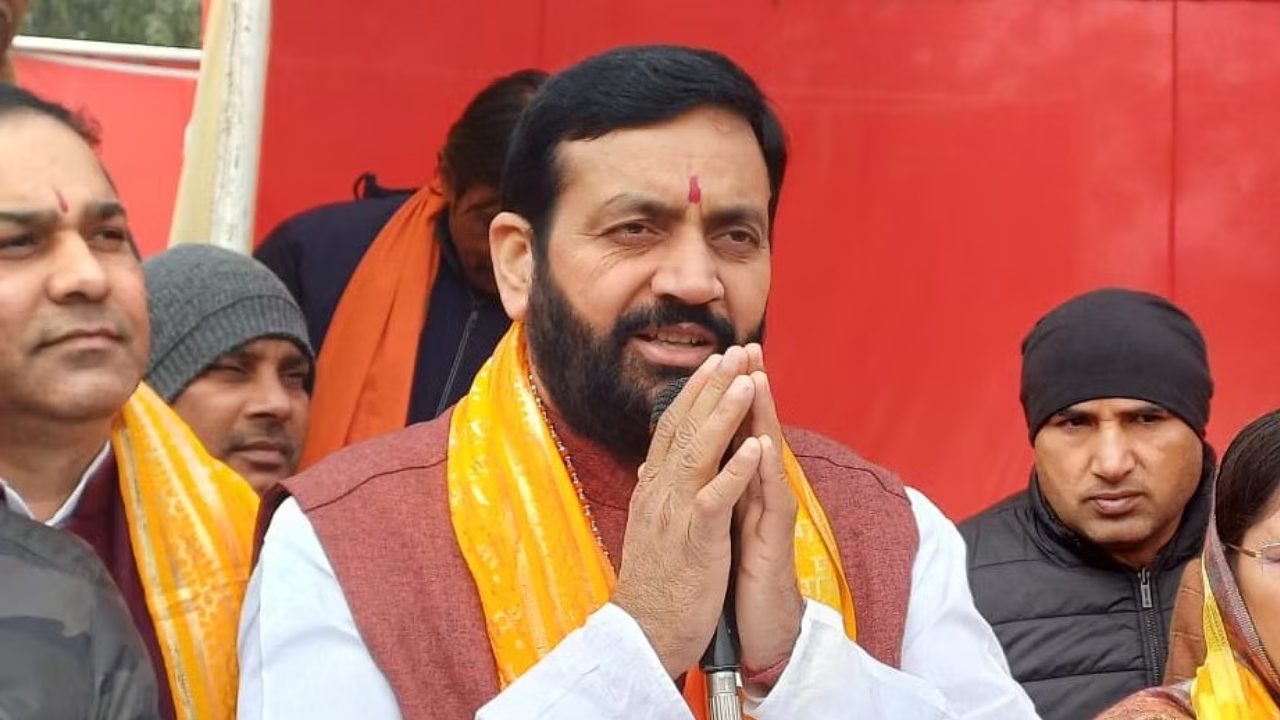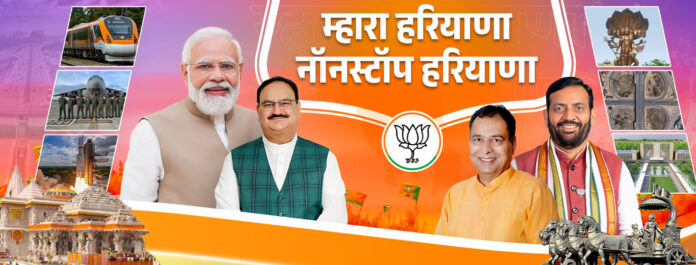Nayab Singh Saini’s Leadership Faces Crucial Test in Haryana Assembly Elections Amid Anti-Incumbency Challenges
The outcome of Haryana’s assembly election was a critical moment for the Bharatiya Janata Party (BJP), particularly for its newly appointed Chief Minister, Nayab Singh Saini. Saini took office just six months ago, in March, replacing Manohar Lal Khattar, who had served as Chief Minister for over nine years. With anti-incumbency sentiments growing during Khattar’s lengthy tenure, Saini faced a daunting task—countering the discontent and delivering a favorable result for the BJP.

Saini’s appointment as the 11th Chief Minister of Haryana was a surprising move by the BJP. At 54 years old, Saini’s rise to this top post marked a shift in the party’s strategy for the state. Khattar had dominated Haryana’s political landscape, but the party saw an opportunity to refresh its image by appointing a leader who could engage more directly with the public. Saini’s political style contrasted with Khattar’s, as he made efforts to make the Chief Minister’s Office (CMO) more accessible. Saini’s brief period in active governance, however, was limited to just two-and-a-half months due to the implementation of the model code of conduct for the assembly polls.
Despite this short window, Saini worked tirelessly to connect with voters. He held cabinet meetings, announced benefits for key voter groups, and sought to address the concerns of the backward classes, government employees, and traders. In the final months of his tenure, his administration advertised a significant number of jobs, clearly aiming to leave a positive impression on voters before the election. These efforts to appeal to the electorate reflected Saini’s voter engagement strategy, but they also revealed the challenges he faced in trying to unite various factions under the BJP banner.

One of Saini’s primary strategies was to consolidate support from the non-Jat communities, which form a substantial portion of Haryana’s electorate. By focusing on providing benefits to backward classes, Saini sought to strengthen his appeal among these voters. However, this approach also led to perceptions that Saini was primarily representing the interests of the backward communities, rather than the entire state of Haryana.
This, according to party insiders, was a calculated move to split the Jat vote, which traditionally leans toward the Congress, the Indian National Lok Dal (INLD), and the Jannayak Janta Party (JJP). Party sources indicated that Saini’s appointment as Chief Minister was influenced by his OBC status, a demographic the BJP was eager to solidify in its corner while Khattar, a non-Jat, had failed to do so effectively.
Born on January 25, 1970, in Mizapur Majra village, Ambala, Nayab Singh Saini’s journey to the Chief Minister’s chair is a testament to his perseverance and deep-rooted connections within the BJP. He started from humble beginnings, working as a computer operator at the BJP’s state headquarters in Haryana, where he became involved in party organizational work by 1996. After completing his BA and LLB degrees from B.R. Ambedkar Bihar University in Muzaffarpur, Saini deepened his political involvement through the Rashtriya Swayamsevak Sangh (RSS), where he forged a close relationship with Manohar Lal Khattar. This connection would prove instrumental to Saini’s political ascent.
 Saini’s early political career began in the early 2000s when he became the district president of the BJP Yuva Morcha in Ambala. His persistence and dedication to the party eventually led him to contest the 2009 assembly elections, though he did not win that time. However, his fortunes turned in 2014 when he was elected as an MLA from Naraingarh, and his close ties with Khattar earned him a ministerial position in the Haryana government.
Saini’s early political career began in the early 2000s when he became the district president of the BJP Yuva Morcha in Ambala. His persistence and dedication to the party eventually led him to contest the 2009 assembly elections, though he did not win that time. However, his fortunes turned in 2014 when he was elected as an MLA from Naraingarh, and his close ties with Khattar earned him a ministerial position in the Haryana government.
Saini’s political trajectory continued upward in 2019 when he was elected as a Member of Parliament from Kurukshetra. His long-standing association with Khattar, nurtured over years of working closely together, helped secure him significant political roles within the BJP. By 2016, Saini was serving as a minister in the Haryana government, with his influence growing steadily.
The BJP’s decision to appoint Saini as Chief Minister was not just about his proximity to Khattar but also a calculated move to address the criticisms surrounding Khattar’s governance. Khattar was seen as a dominant, yet somewhat inaccessible leader, and Saini was tasked with reshaping the BJP’s image in Haryana. Saini’s background as a member of the OBC community was also critical, as the party sought to secure non-Jat votes and broaden its electoral appeal in a state where caste dynamics play a significant role in politics.
However, the challenge for Saini extended beyond voter outreach. The anti-incumbency factor, built over Khattar’s nine-and-a-half-year tenure, loomed large, and Saini had little time to build a fresh rapport with the electorate. His efforts to provide benefits and address key issues in the state, while commendable, were undertaken under the shadow of Khattar’s legacy, making the stakes of the upcoming election particularly high.

As Haryana headed into assembly elections, the results would determine not only the fate of Saini’s leadership but also the broader trajectory of the BJP in the state. The party’s strategic decision to appoint Saini as Chief Minister reflected its desire to appeal to new voter bases, but the extent of its success remained to be seen. For Saini, the election represented a crucial test of his leadership and ability to navigate the complexities of Haryana’s caste-driven political landscape.

